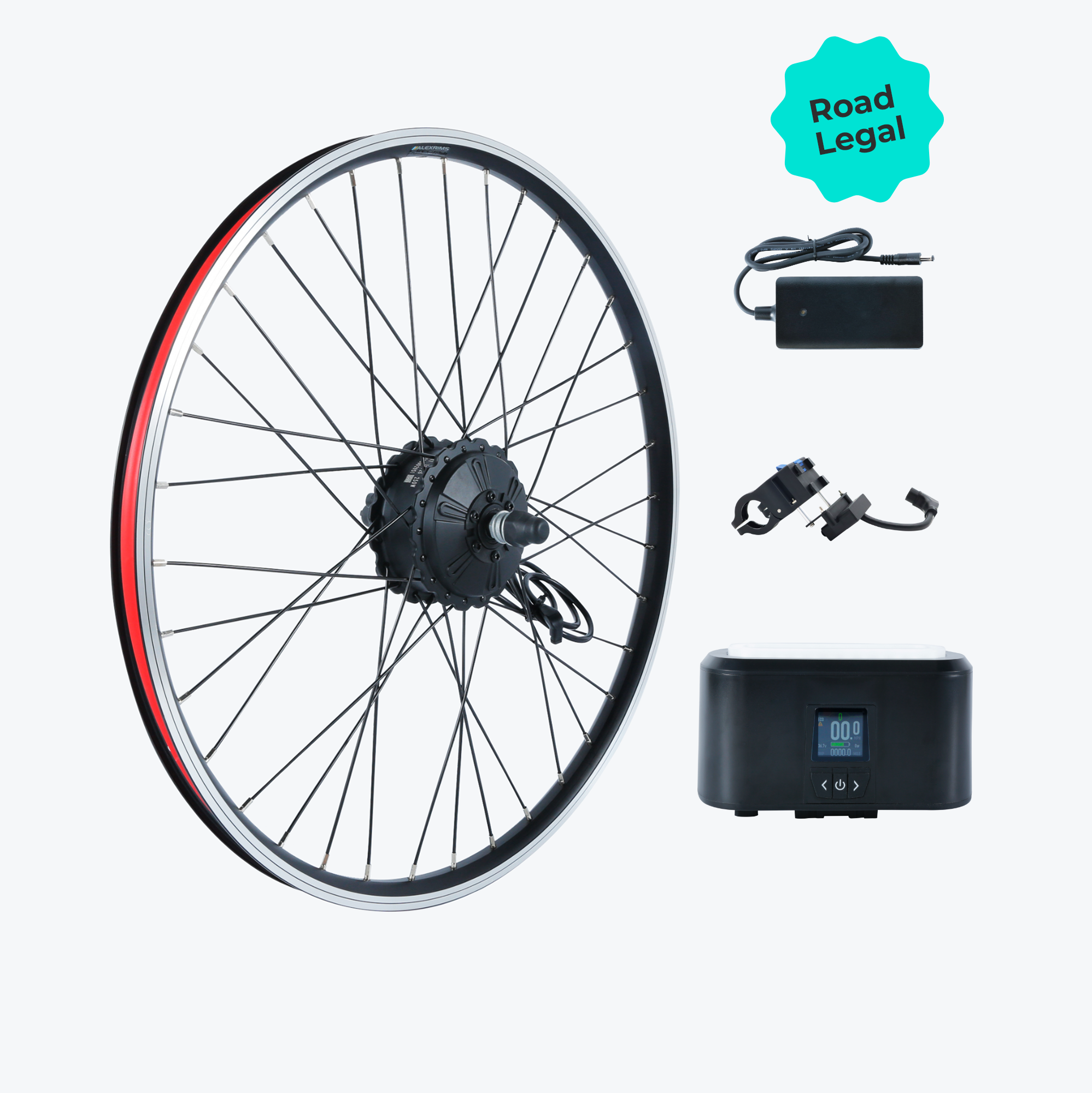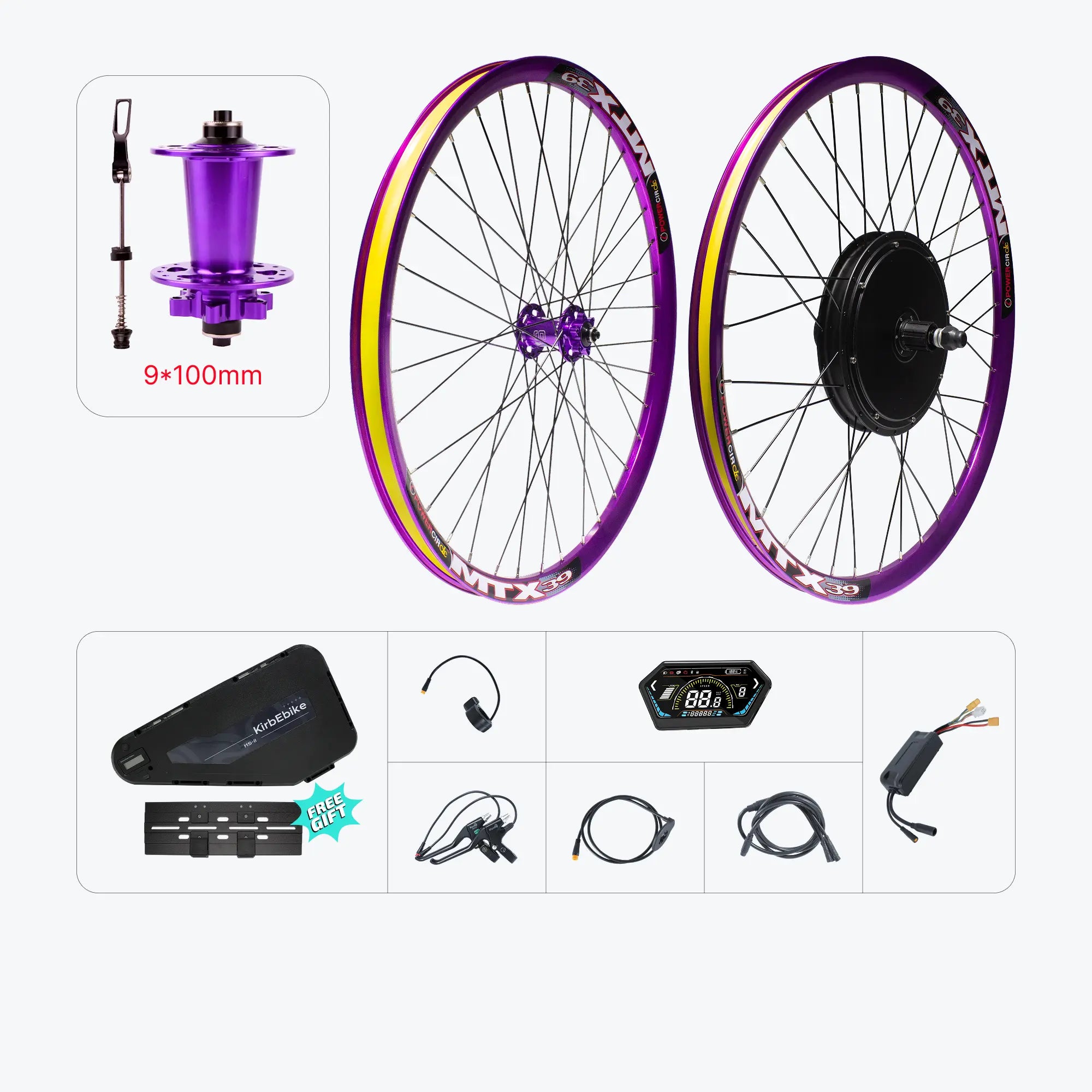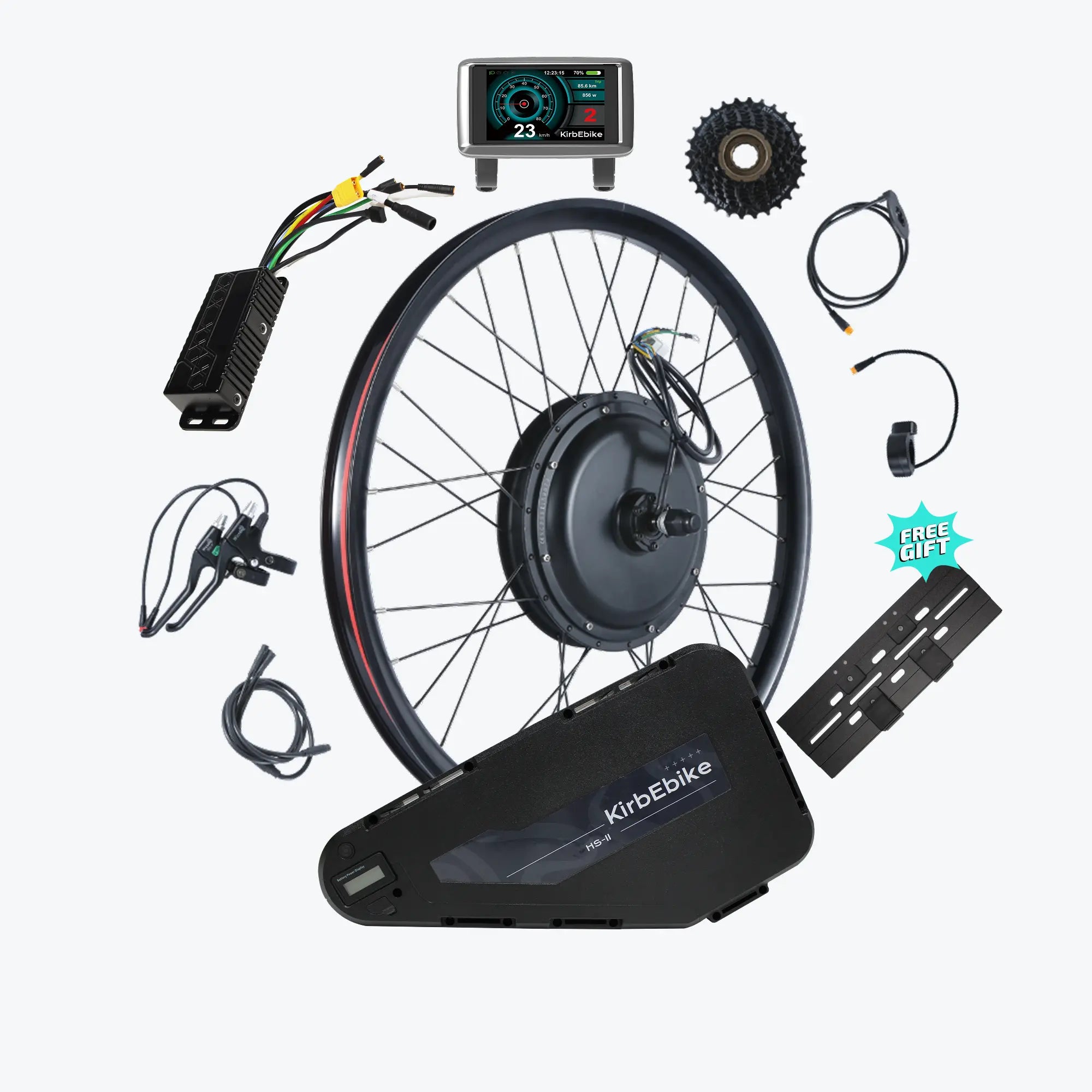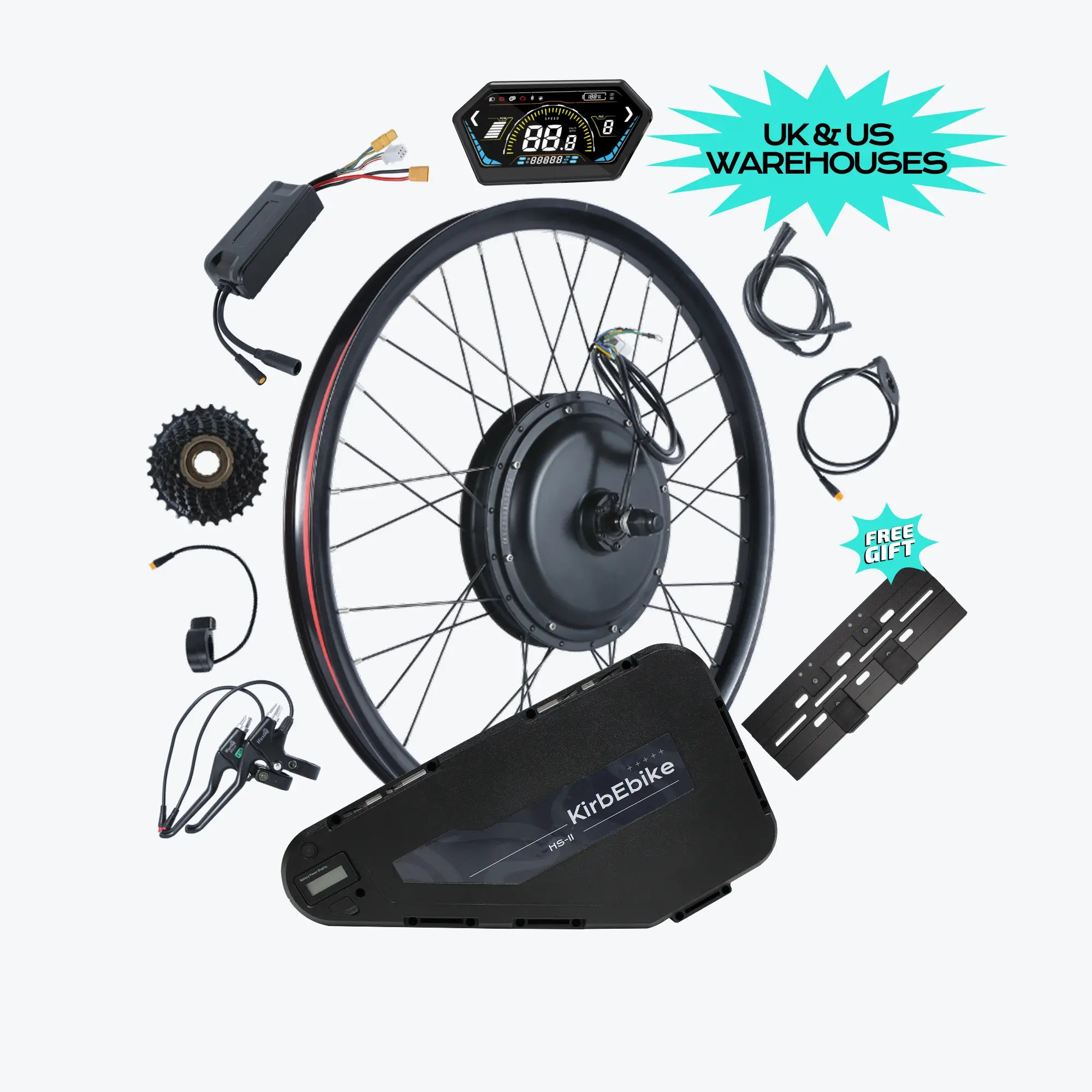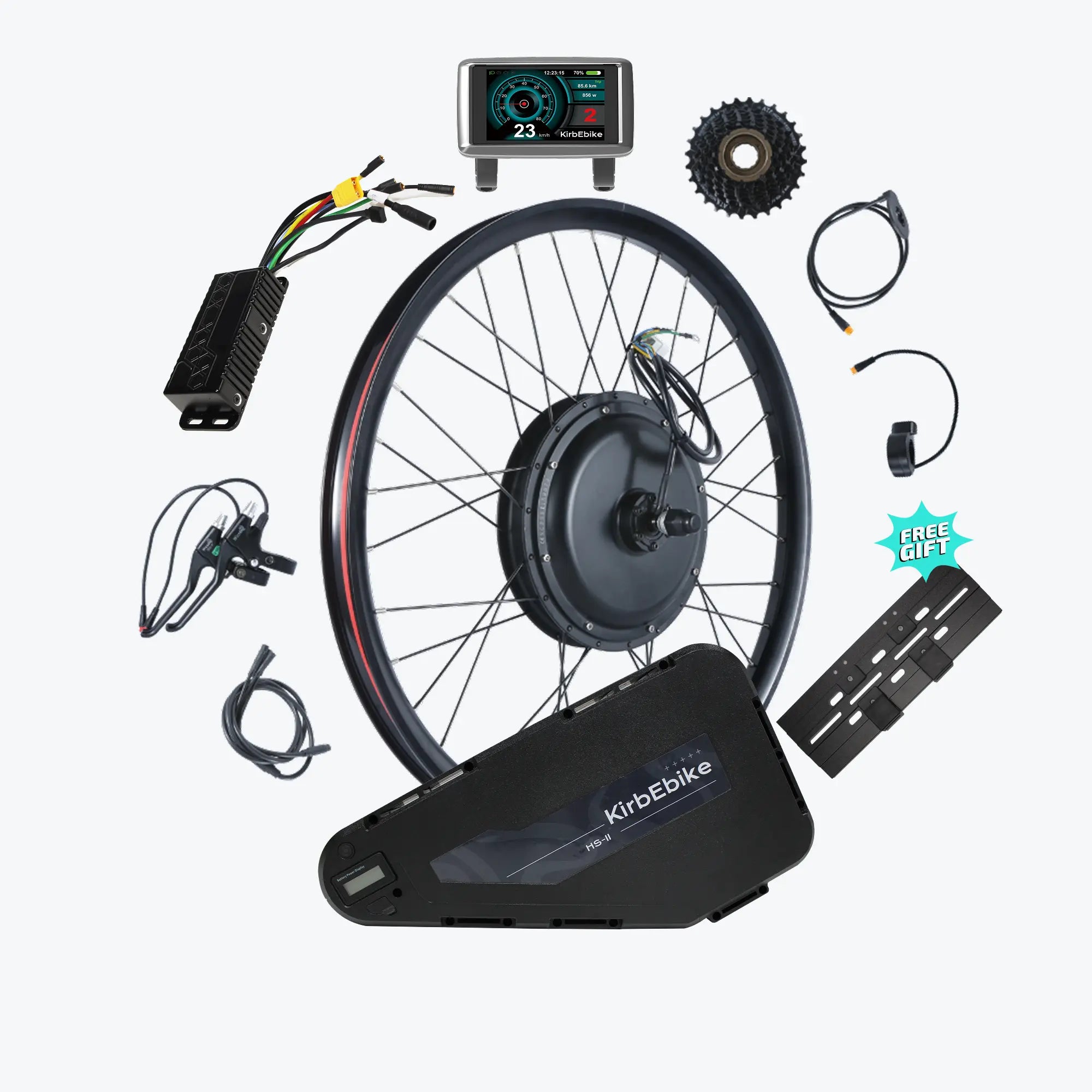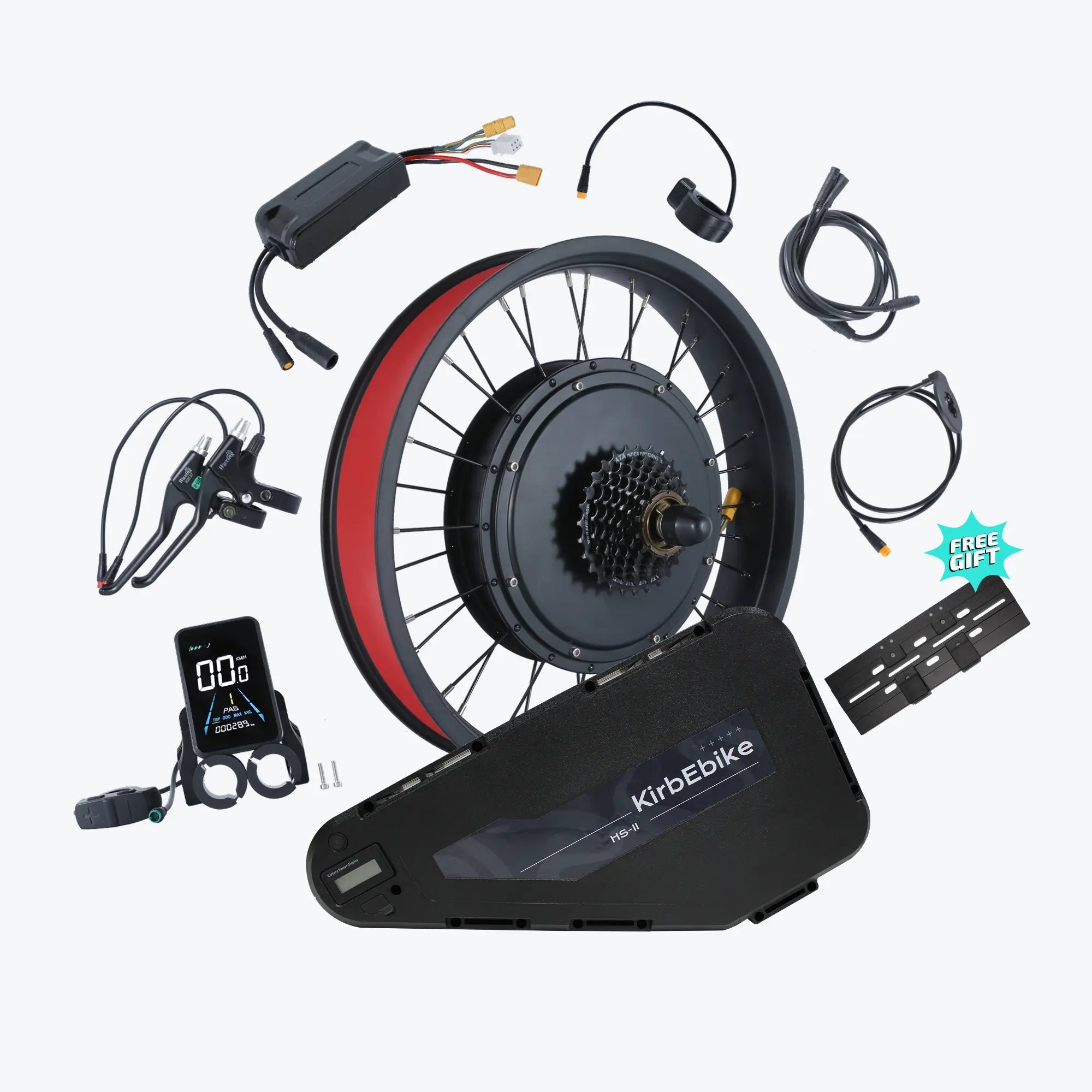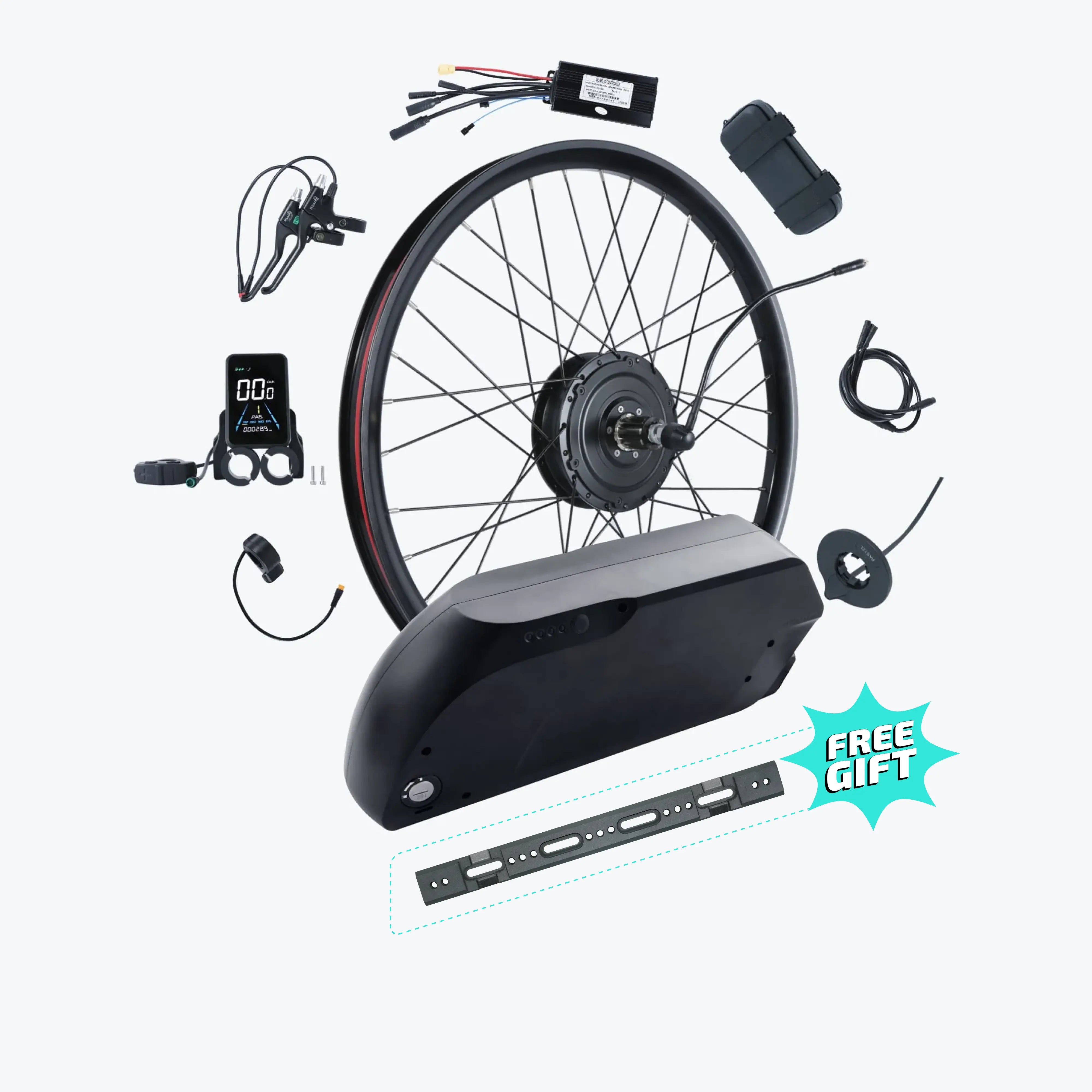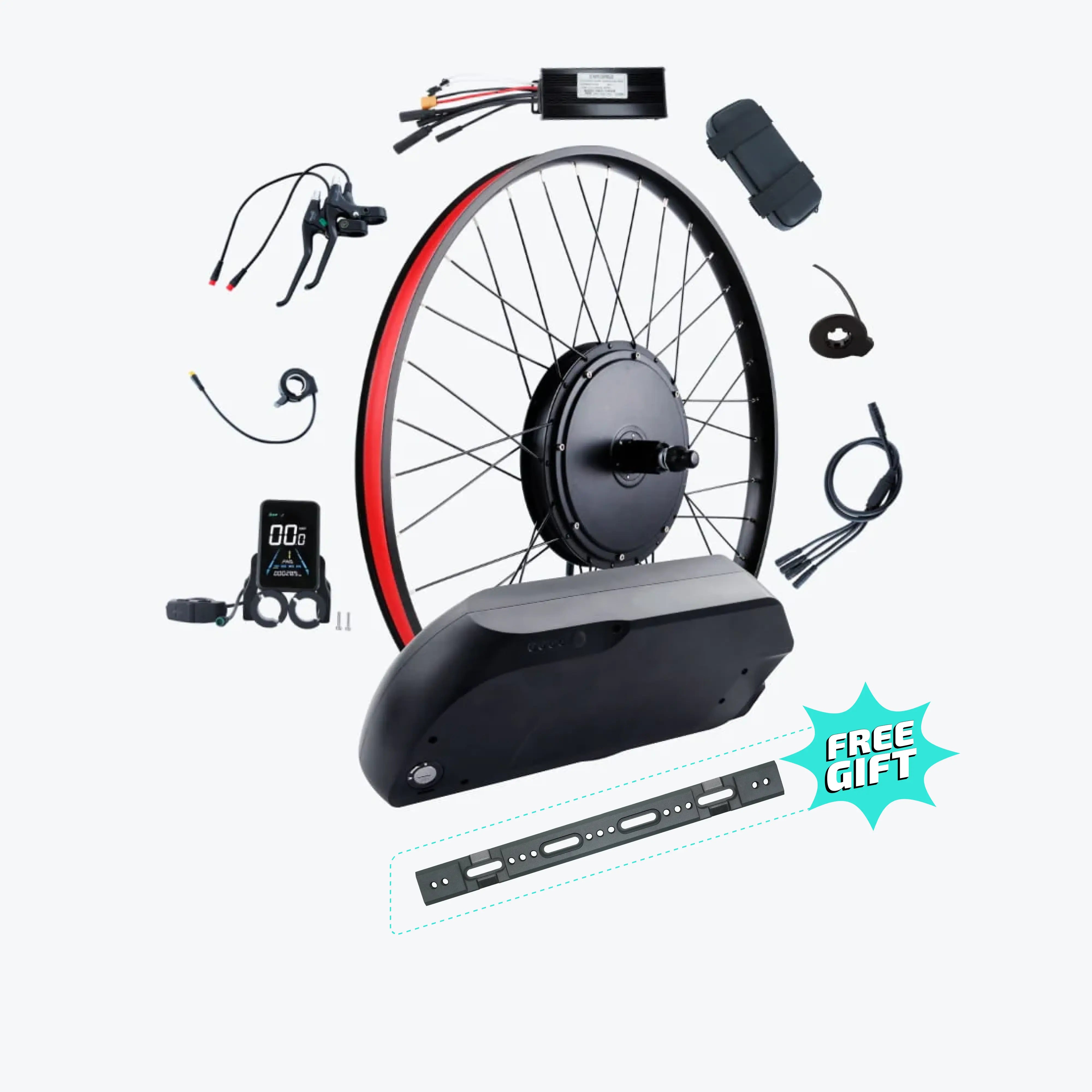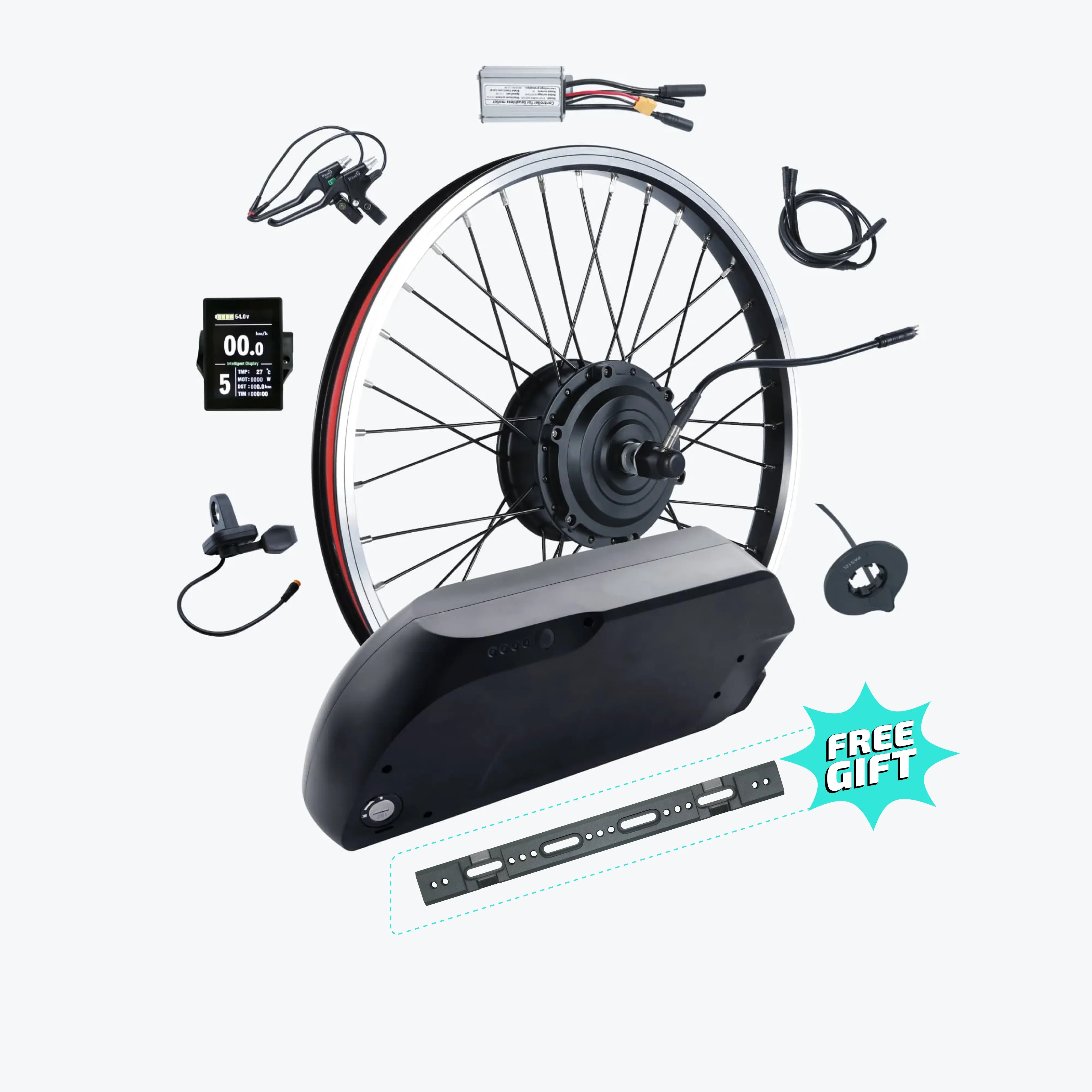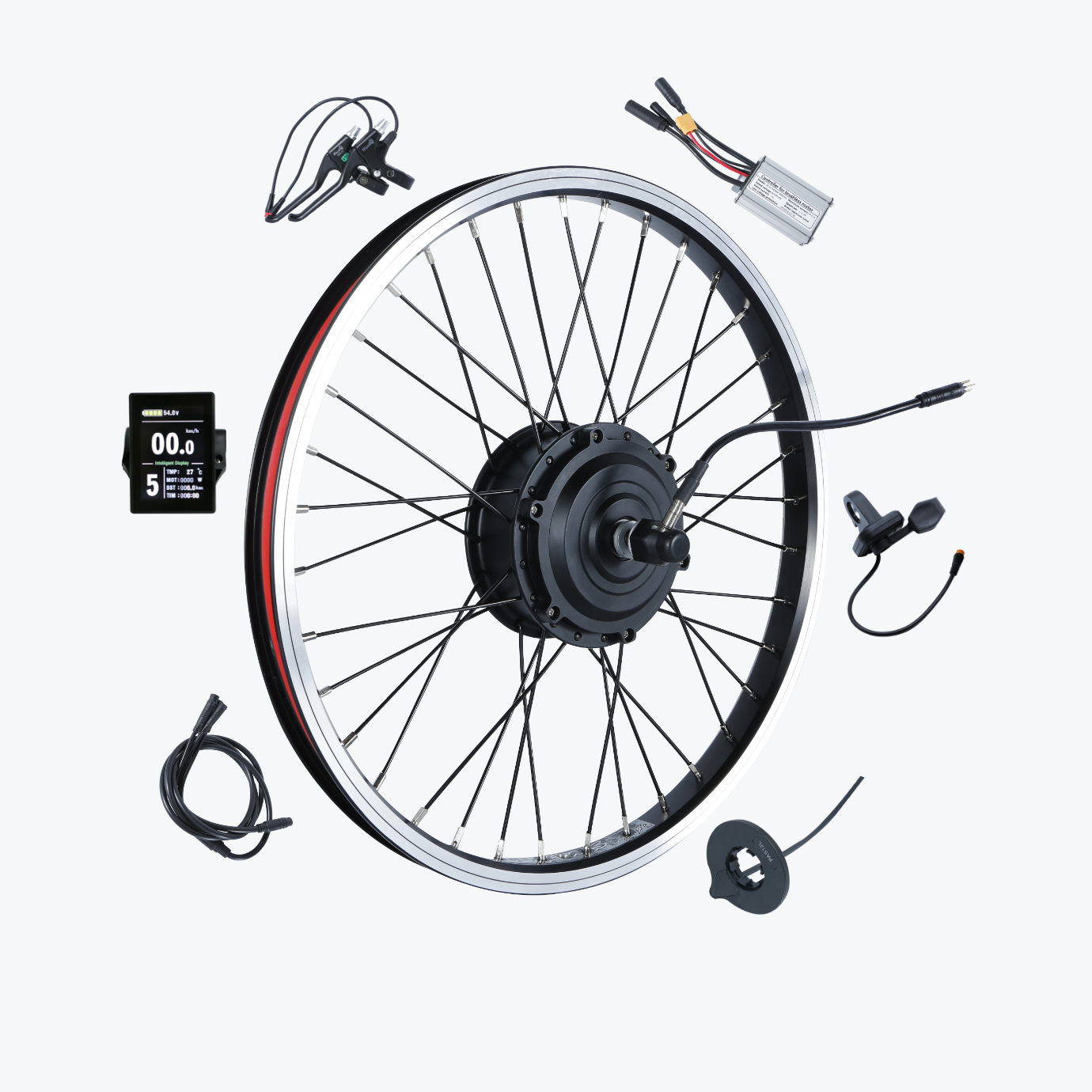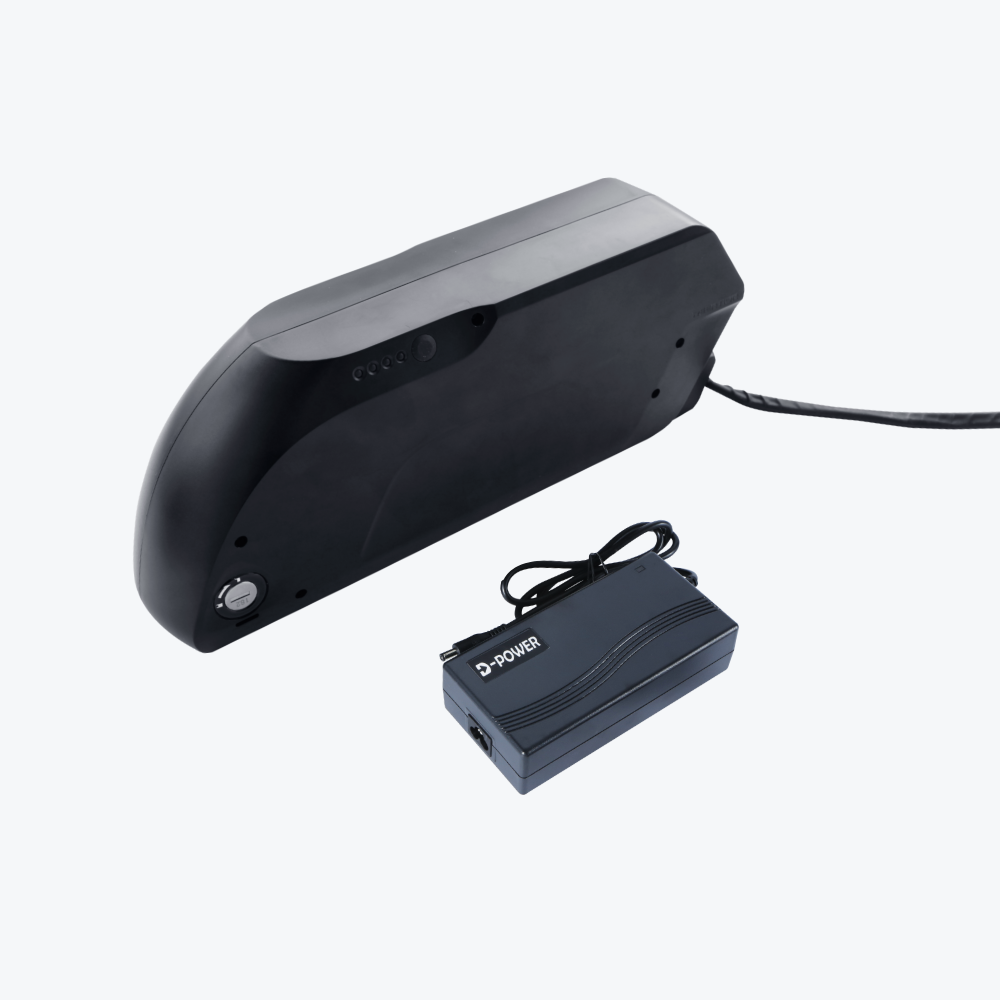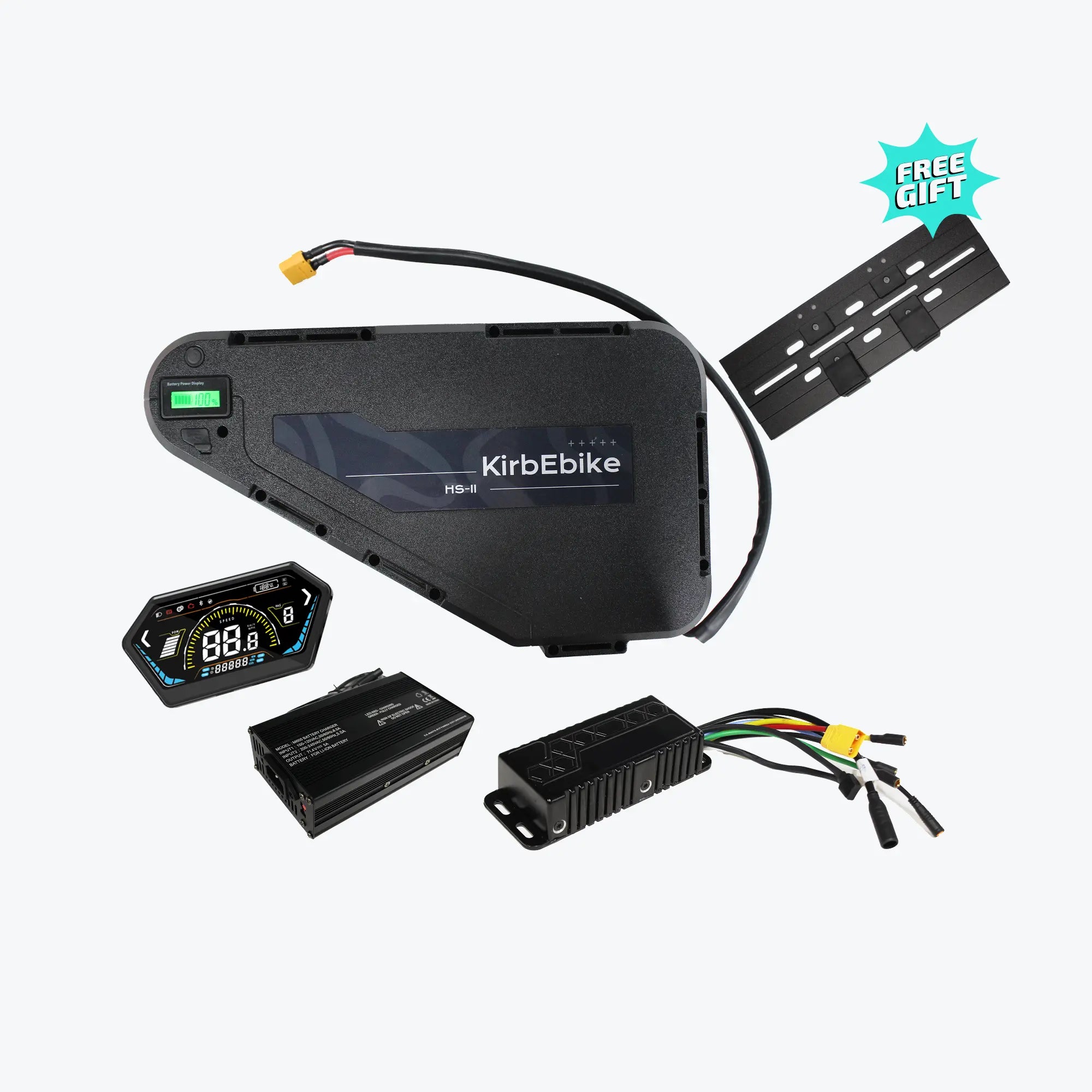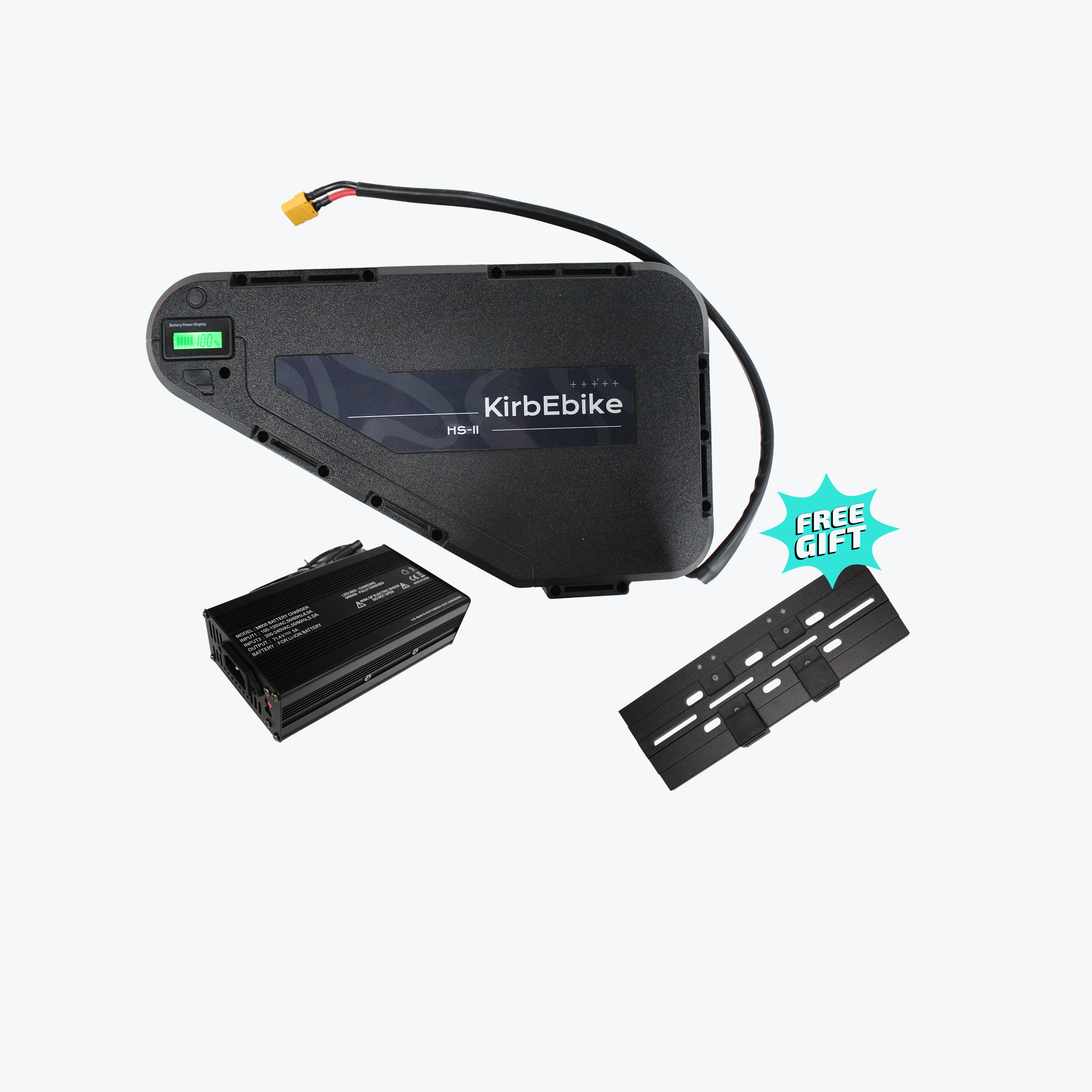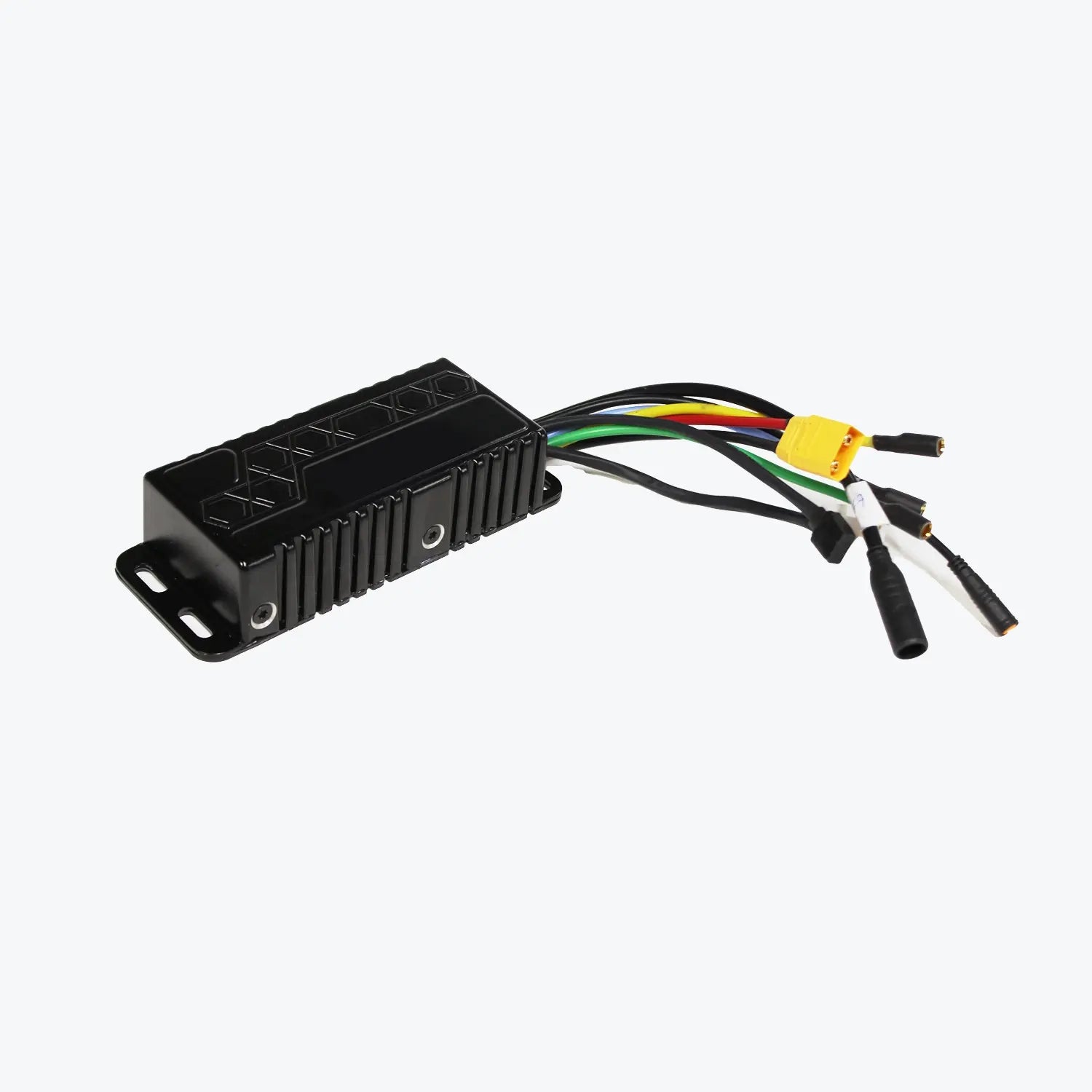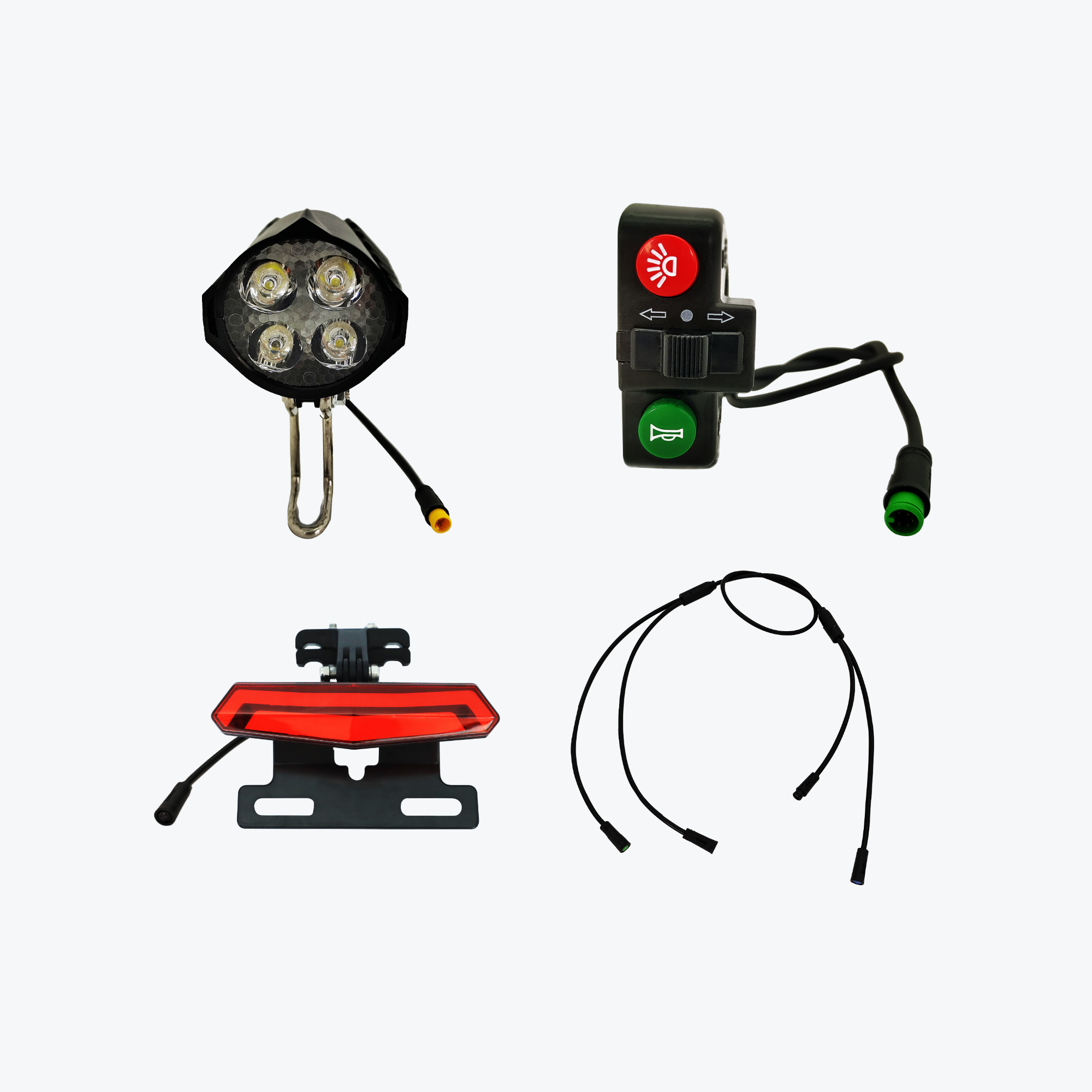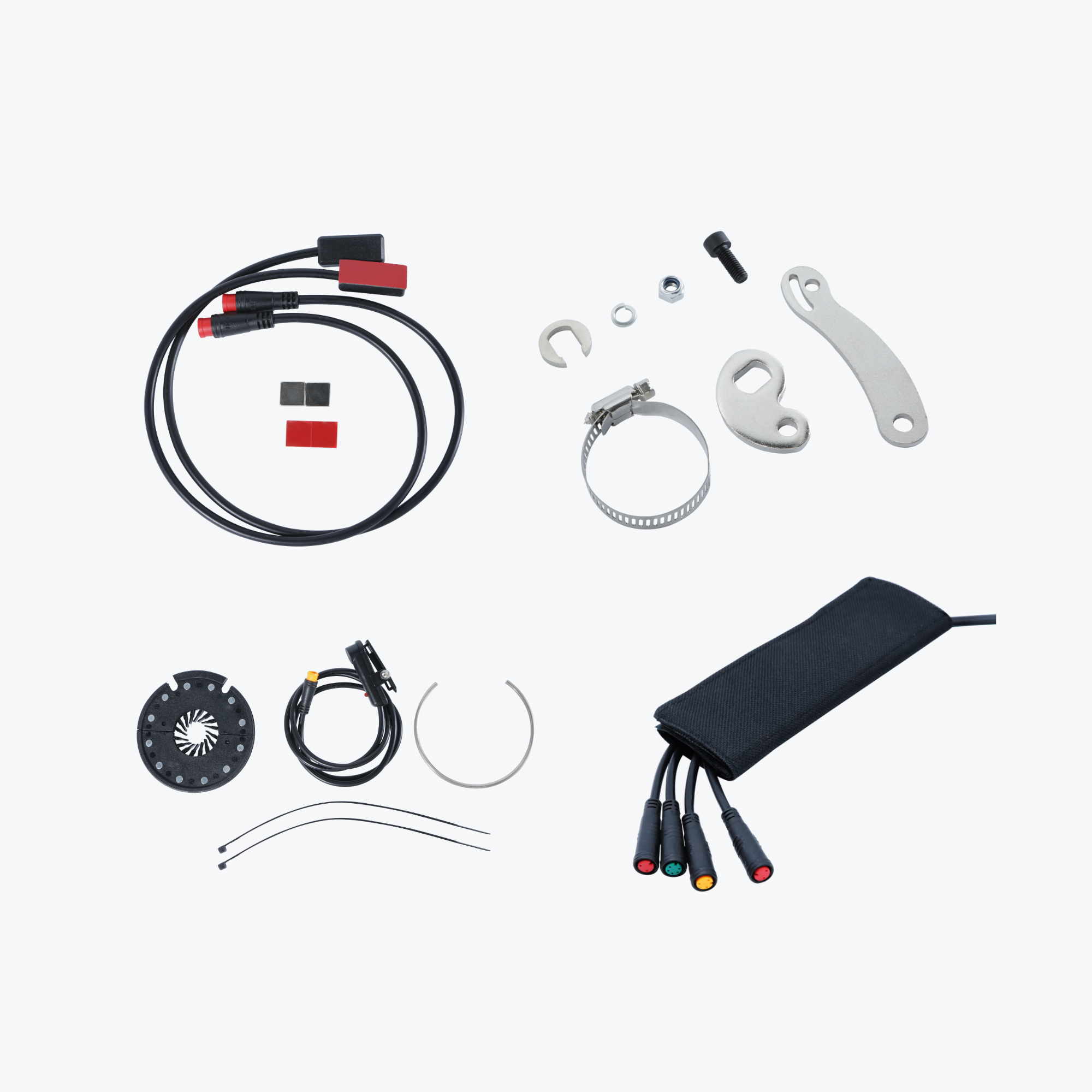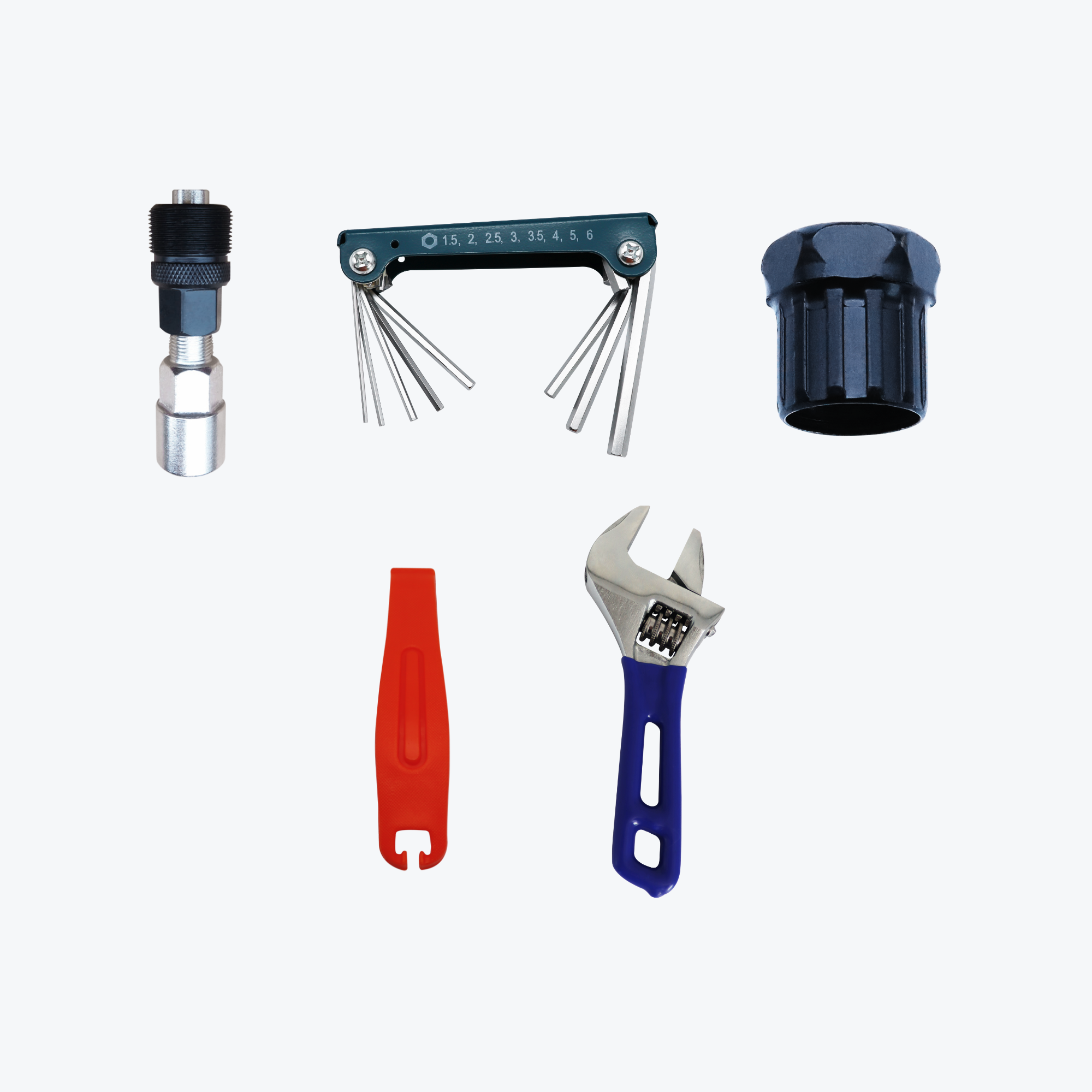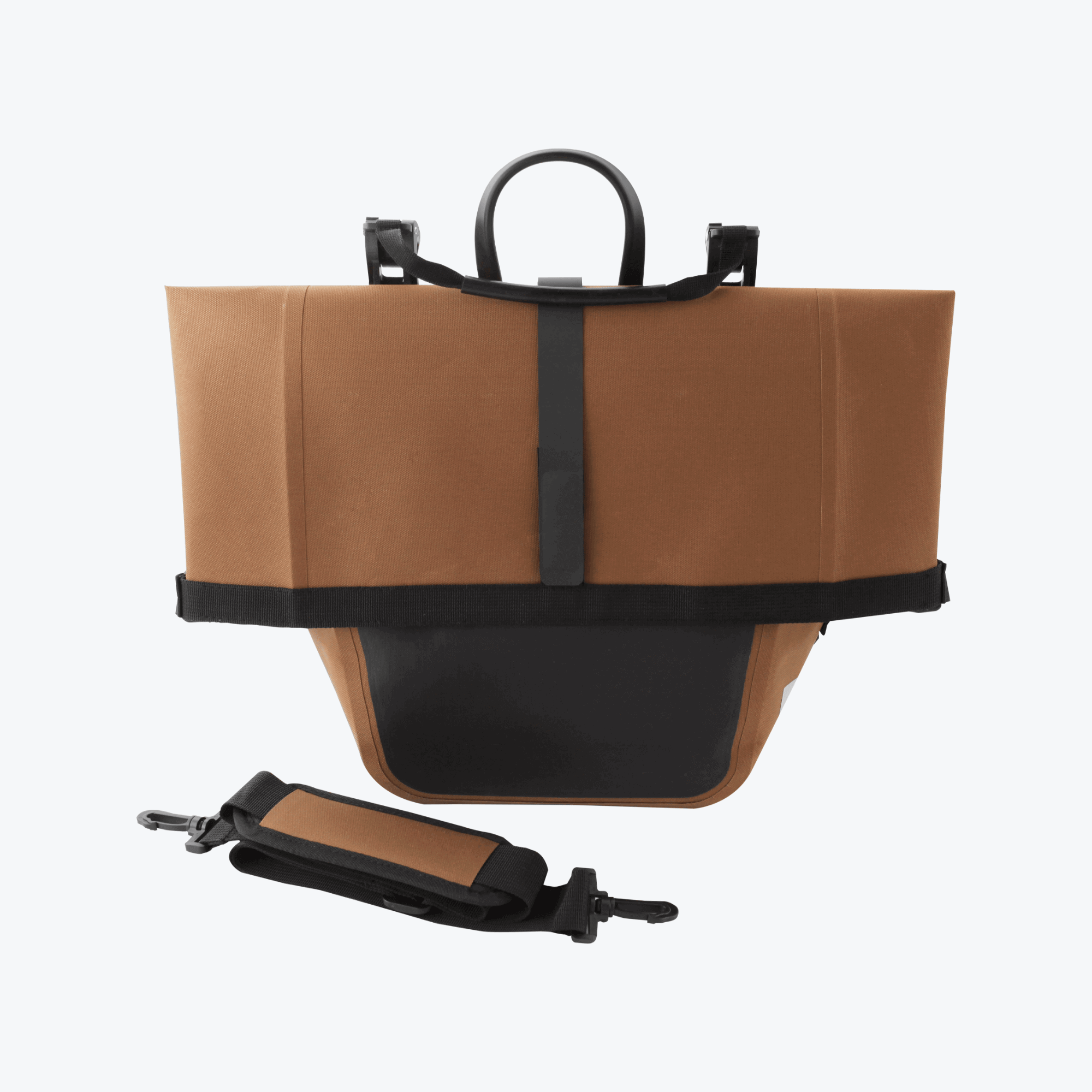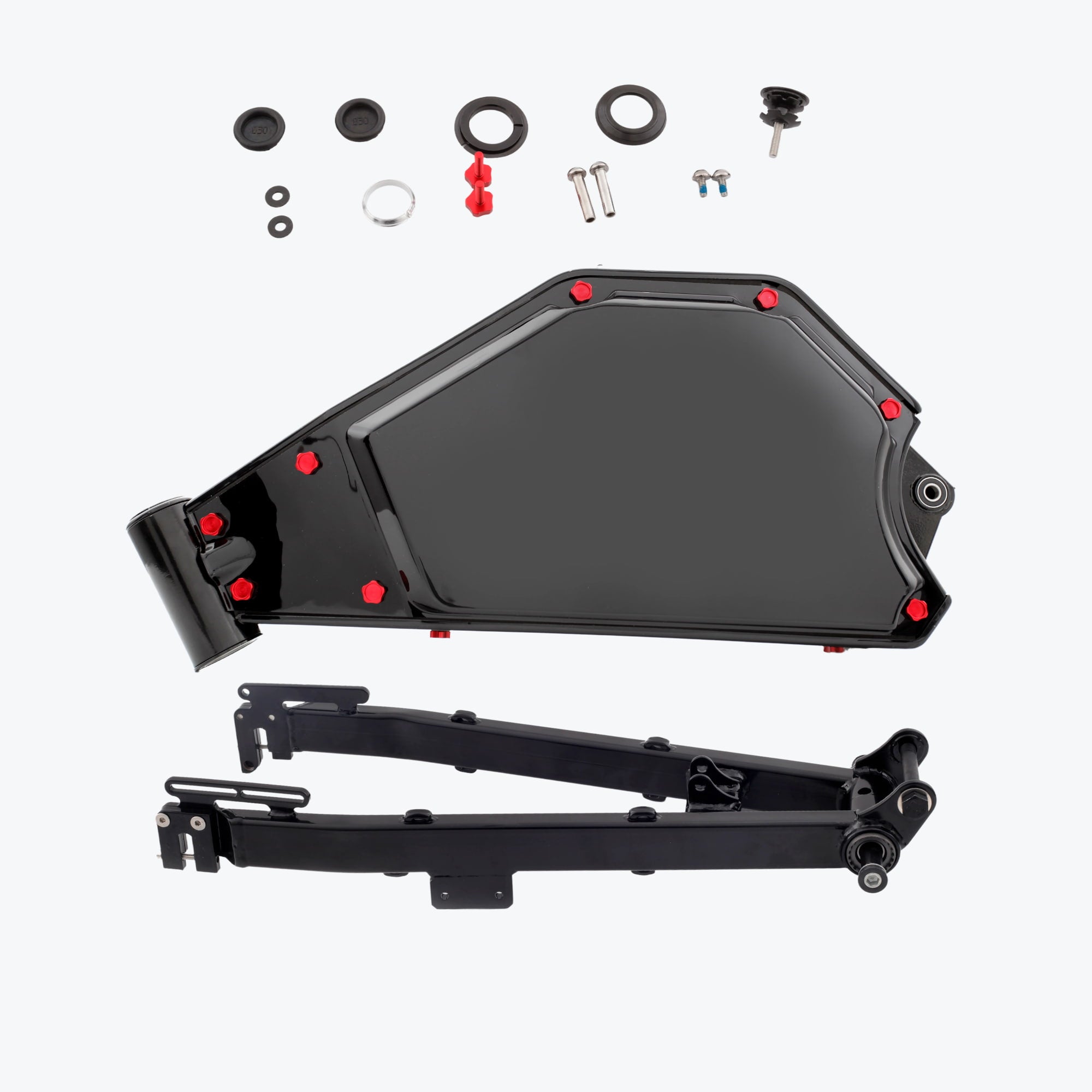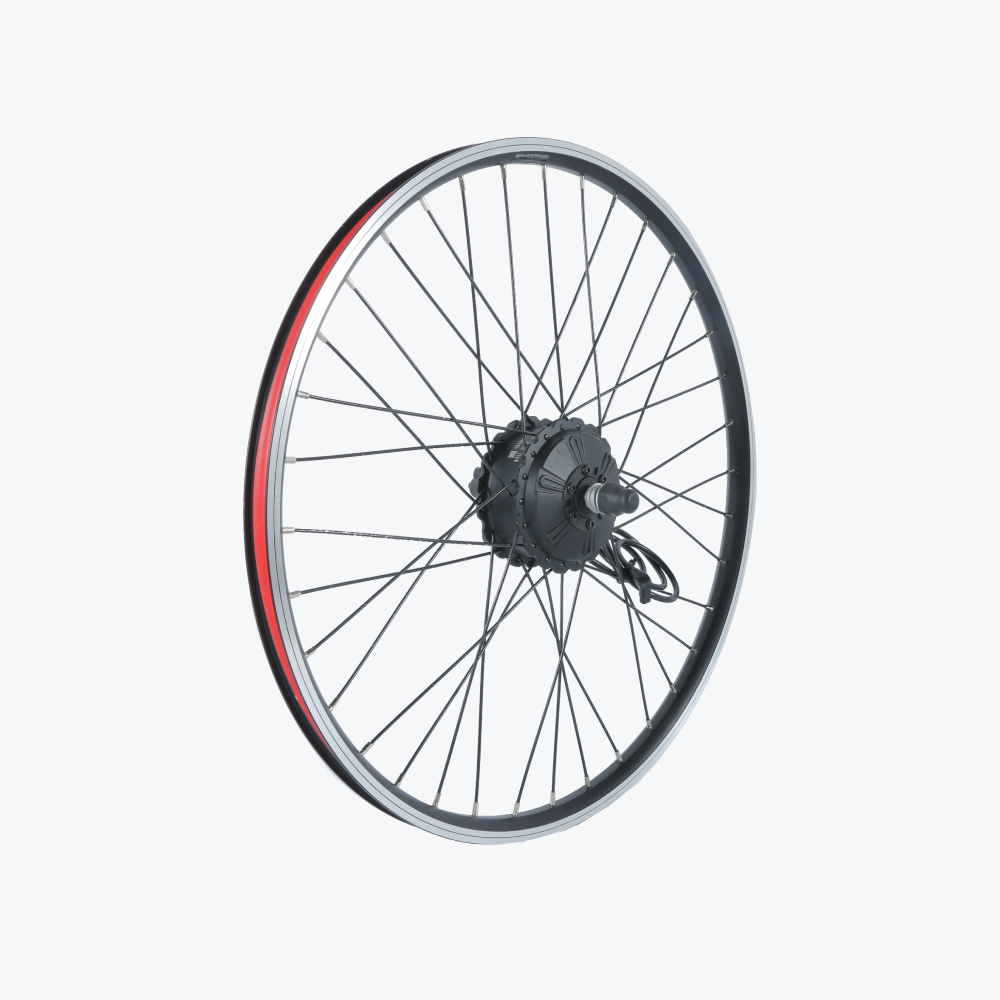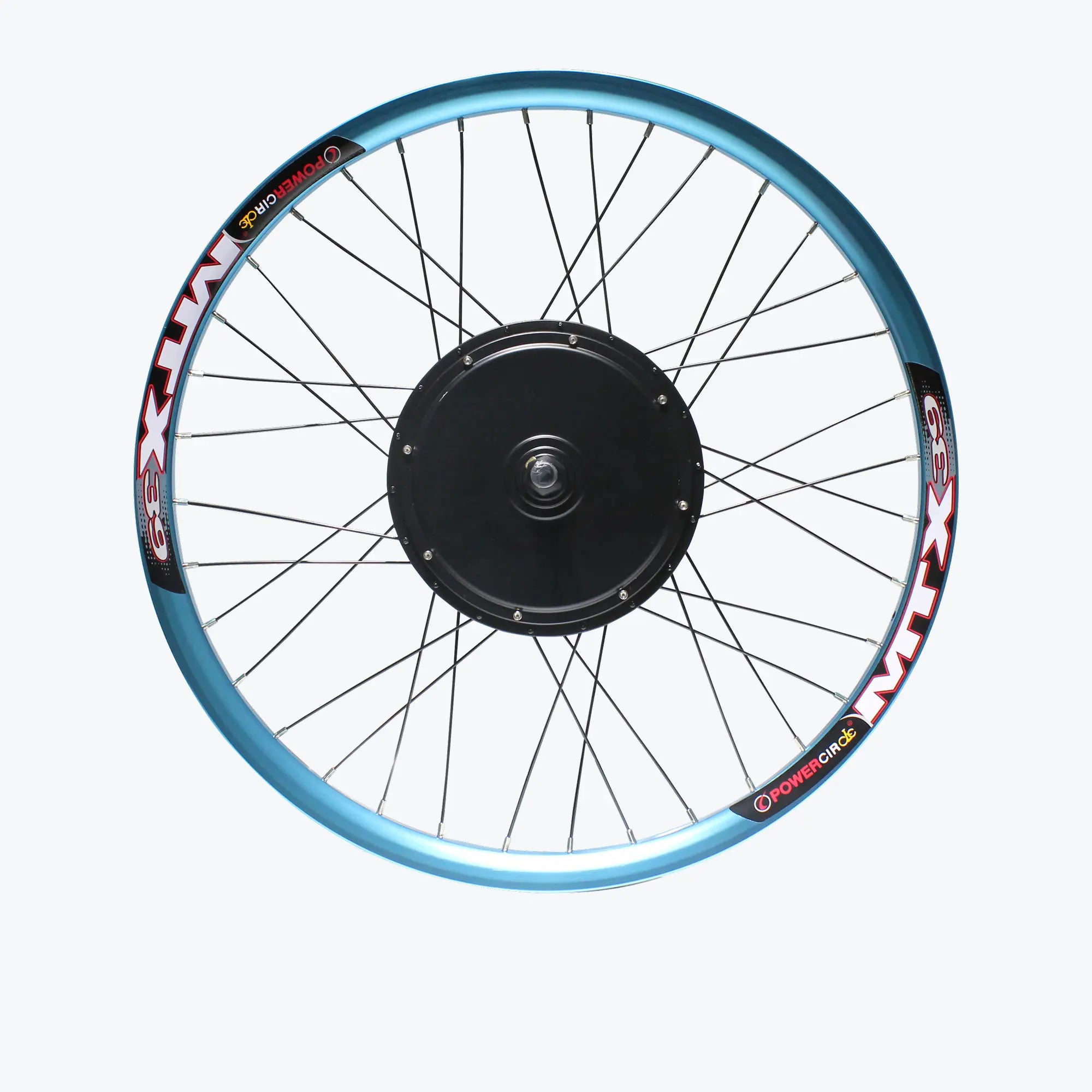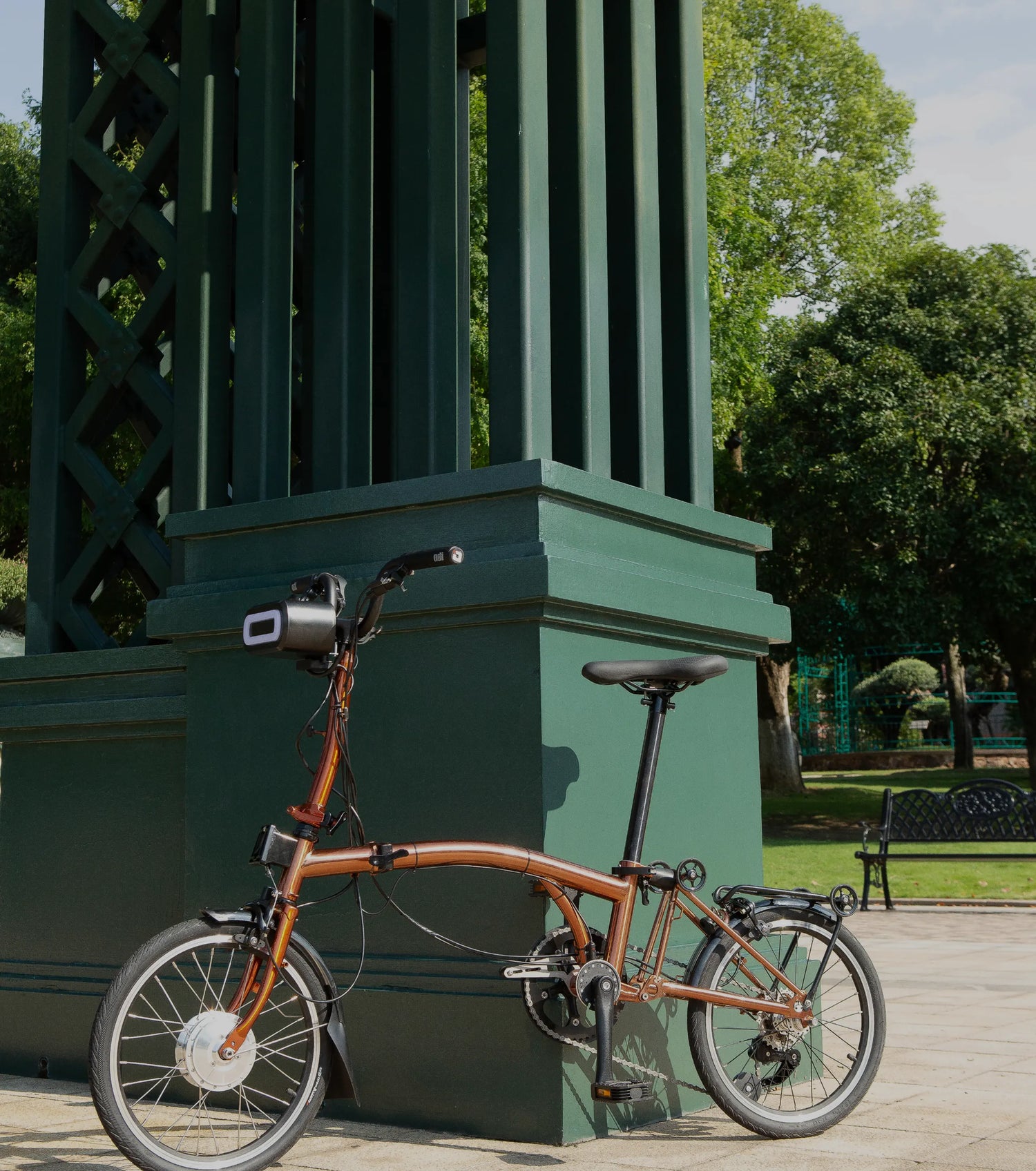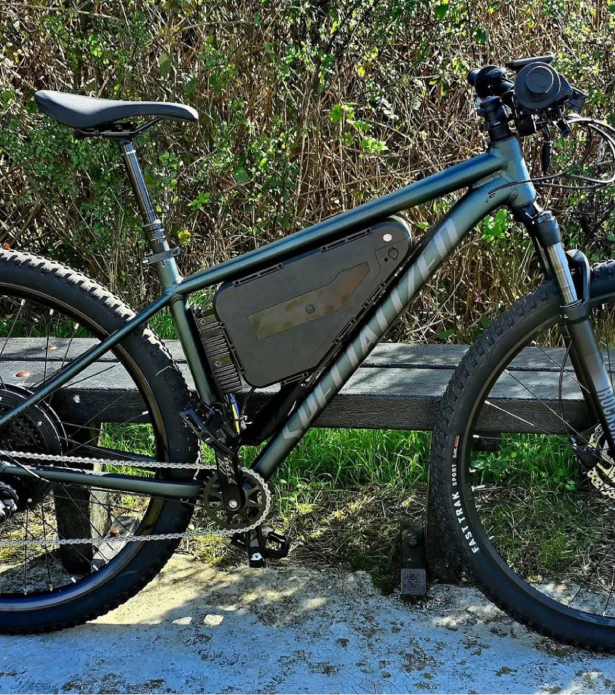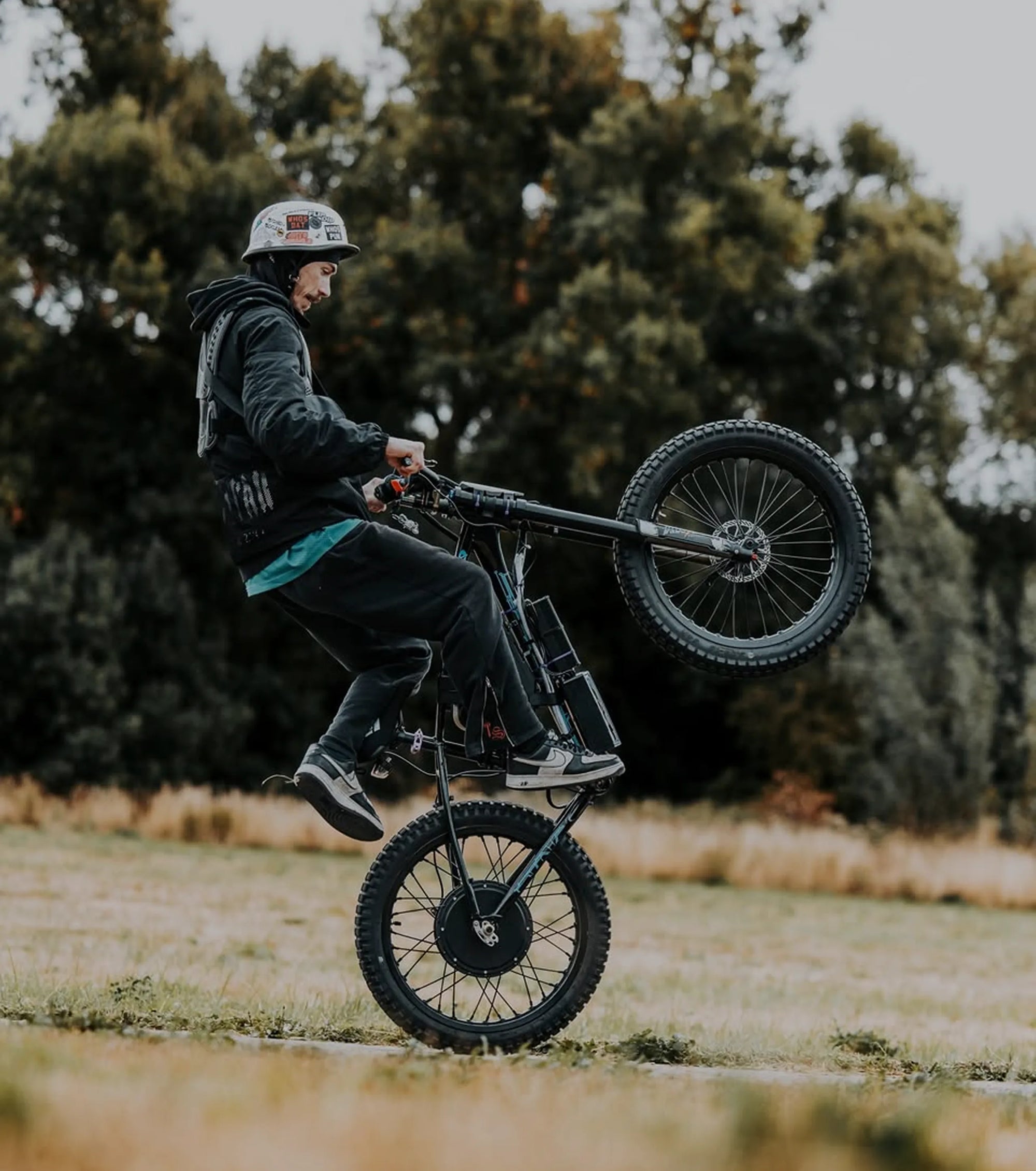If you’re asking what is the fastest electric bike conversion kit, you’re really asking a few deeper questions: how do voltage, controller current, and motor type translate into speed; what battery size and chemistry keep that speed alive; and how do you build a bike that can handle it safely? In this guide, we’ll unpack the engineering behind “fast,” the trade-offs you’ll face on the road or trail, and the KirbEbike kits and batteries that enthusiasts pick when they want serious pace—especially at 72V.
Before we go full throttle, one important note for riders in the UK/EU: public-road e-bikes (EAPC) are limited to 250 W continuous and 15.5 mph (25 km/h) assisted speed. Anything above that is for off-road/private land or jurisdictions that allow higher power. Build responsibly.
“Fastest” Isn’t Just Watts—It’s a System

Speed on an e-bike comes from the whole system: battery voltage (how hard you can spin the motor), controller current (how much push you can give it), and motor design (how efficiently it turns volt/amp into wheel RPM under load). A direct-drive rear hub with a high-amp FOC controller and a 72V triangle battery is a proven recipe for sustained top-end speed on private land. Mid-drives can feel violently quick off the line and on climbs, but for sheer, wind-in-your-face top speed, large direct-drive hubs paired with 60A-class controllers and 72V packs are the usual winners.
Why voltage matters: at a given current, higher voltage yields higher available wattage (P = V × I), and—crucially—better RPM hold at the top end. That’s why 72V systems feel like they “keep pulling” where 48/52V builds start to run out of breath.
Direct-Drive Hub vs Mid-Drive for Top Speed
Direct-drive (DD) hubs are simple and robust. There’s no gear reduction, so you can run high electrical RPM without exploding gear teeth. DD hubs excel at sustained speed, hold momentum well, and handle high voltage/current with the right winding and controller. They also regenerate a bit of energy on long descents when configured for regen braking.
Mid-drives multiply torque through your bicycle drivetrain. That’s amazing for steep climbs and technical riding, and it can feel brutally fast from 0–30 km/h. But drivetrains wear faster at big power, and high top speeds depend on chainring/cassette ratios as much as motor RPM. If your goal is a genuine “fastest off-road top-speed build,” the cleanest path tends to be a high-power DD hub.
Controller Amps: The Hidden Lever Behind Speed
Controllers are the “throttle body” of your system. A FOC sinewave unit at 50–60A on 72V can deliver 3.6–4.3 kW peak bursts, depending on sag and settings. That isn’t just raw power; high-quality FOC drives deliver smoother startup, quieter running, and more precise current control—exactly what you want when a bike is capable of 50–80+ km/h on private land.
On the other hand, a 35–40A controller at 48–52V is a brilliant sweet spot for many riders, but it won’t touch the sheer top-end numbers a 72V/60A system can reach with the right hub.
The Battery: Why 72V Triangle Packs Dominate Fast Builds

- Voltage headroom. A 72V pack lets you spin a motor fast enough to maintain speed even into headwinds and long flats.
- Chassis balance. A triangle battery sits low and central, keeping the bike stable when you’re flying.
For high-speed builds, capacity determines how long you can hold that speed. A 72V 20Ah (~1,440 Wh) is a strong baseline; 25–30Ah (~1,800–2,160 Wh) gives real endurance. The trade-off is weight. Many riders start with 20Ah, learn their routes, then step up to 30Ah or add a second pack once they taste the speed.
So… Which Kits Are the Fastest?
Within the KirbEbike ecosystem, the fastest setups are the high-power rear-hub kits driven by 72V batteries and high-amp controllers. These systems are commonly paired with fat-bike rims or strong 27.5/29er rims and are marketed for off-road use. While the exact top speed depends on your wheel size, aero, rider mass, and tune, these builds can enter 50–80+ km/h territory on private land.
If you’re exploring options, start from the kits + battery collection and filter by voltage and capacity that match your goals:
A practical “fast build” stack might look like:
- Motor: High-power DD rear hub (fat-bike or strong MTB rim)
- Controller: FOC sinewave, ideally 50–60A with good thermal management
-
Battery: 72V triangle, 20–30Ah depending on range goals
- Display & PAS: Color TFT + PAS for tuneability; throttle for off-road bursts
- Brakes/Chassis: 4-piston calipers, large rotors, true wheels, torque arms, quality tyres
Speed Reality Check: What Changes the Number on Your GPS

Two 72V/60A bikes can yield very different top speeds. Here’s why:
Wheel diameter & tyre type. Bigger diameter = more distance per motor revolution, great for top speed. But knobby or fat tyres add rolling drag. You’ll gain stability and grip but sacrifice a few km/h on the same power.
Aerodynamics. At 50+ km/h, air is your biggest enemy. A narrower bar, slightly lower torso, smooth clothing, and even a small front bag placed wisely can alter your drag profile enough to change your top number by a few km/h.
Battery sag & health. A fresh, warm 72V pack with low internal resistance will push harder than a cold, aged pack. In winter, expect slower bikes unless you keep batteries warm pre-ride.
Controller tuning. Current limits, phase-amp limits, and field weakening (if supported) are powerful dials. A conservative tune preserves range and components; an aggressive tune wins on the speed board but eats battery and raises temperatures.
Rider mass & gradient. Gravity is undefeated. Heavy riders on long climbs will see lower top speeds and higher Wh/km.
Safety & Reliability When You Build for Speed
High speed is addictive—manage it with the right hard parts and habits:
Brakes. If you’re chasing the “fastest electric bike conversion kit,” budget equally for stopping. Big rotors, quality pads, and fresh fluid (for hydraulics) are non-negotiable.
Torque arms & axle nuts. Re-torque after your first 50–100 km. A spinning axle in a dropout is a fast-build nightmare you can prevent with a $10 part and 10 minutes.
Controller cooling. Don’t mummify a hot controller in a bag. Use a ventilated mount or heat-sinking plate. Thermal rollback kills speed runs.
Electrical discipline. Use proper connectors (XT90/MT60/Anderson), correct gauge wire, and clean crimps/solder. Warm plugs are warning signs—fix them before the next ride.
Triangle Mount Holder. Balanced triangle mount; anti-wobble, anti-theft ready; room for larger batteries. It’s a small line item that prevents big problems on rough terrain and makes upgrading capacity simpler later.
Ride plan. Test incrementally. Start with a moderate current limit, learn the handling/braking at 30–40 km/h, then unlock more once the bike—and you—are ready.
Battery Choices: 48/52V vs 72V (and Why 72V Wins for Fast)
If you’re keeping to multi-use paths and moderate speeds, 48/52V is fantastic—lighter packs, simpler tuning, excellent reliability. But if the mission is “fastest,” 72V takes the win:
- Top-end RPM: The motor holds speed with less drop-off.
- Sustained pull: Headwinds and long straights feel less punishing.
- Controller headroom: 60A on 72V delivers a kind of authority 40A/52V can’t match.
A good pathway is to start with a 72V 20Ah triangle pack to learn your bike’s consumption. If the grin still isn’t wide enough, go 25–30Ah. KirbEbike’s 72V 20Ah pack is a smart first purchase precisely because it fits easily, balances the frame, and ships with a 5A charger, clear indicator behavior at 84V full, and USB-C convenience.
Legal & Ethical Riding (UK/EU Reminder)
If you live where public-road limits apply (e.g., UK/EU), the fastest kits are not for public roads. Keep high-power builds to private land and legal venues. For commuting, touring, and cycle-infrastructure riding, choose an EAPC-compliant 250 W system limited to 15.5 mph (25 km/h) and enjoy the lanes without stress. KirbEbike offers both ends of that spectrum, so you can have a compliant road bike and a “fun bike” for private weekends.
Putting It Together: Recommended Paths
Path A: Fast Off-Road Build (Private Land)
Choose a high-power rear DD hub, pair it with a FOC 50–60A controller, and feed it a 72V triangle battery (20–30Ah). Add 4-piston brakes, big rotors, torque arms, and quality tyres. Tidy the wiring, give the controller airflow, and tune the display for progressive current ramps. You’ll have a machine that not only sprints but holds speed with composure.
Path B: Quick-But-Practical All-Rounder
If you want a punchy feel without chasing top speed, a 48/52V hub kit with a 35–40A controller and a good down-tube battery is superb. It’s gentler on drivetrains, lighter, cheaper, and still transforms your rides.
Conclusion: The Fastest Kit Is a Balanced System—72V Makes It Sing
There isn’t a single “fastest electric bike conversion kit” in a vacuum; there are fast systems built from parts that belong together. If your goal is truly high top speed on private land, the formula is consistent: 72V triangle battery, high-amp FOC controller, and a direct-drive rear hub on a chassis with brakes and tyres to match. Start with a 72V 20Ah pack to learn your real-world consumption; step to 25–30Ah for range that keeps the speed alive. If your daily riding is on public roads with EAPC limits, keep a compliant build for the commute—and a fast one for the weekend. That’s how you get the best of both worlds without compromise.

